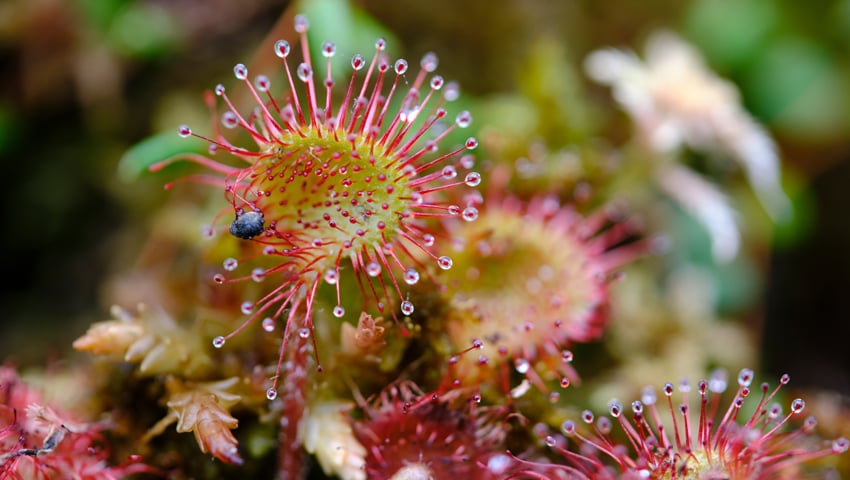Researchers from Wageningen University & Research (WUR) and Leiden University have engineered a biological barrier that protects plants from diseases and pests – a sticky substance that’s sprayed on leaves, to which pests stick.
The researchers hope that this insect glue will help to reduce the use of toxic chemical pesticides.
In the search for biological alternatives, scientists from WUR and Leiden University turned to nature for inspiration. Thomas Kodger, Associate Professor of Physical Chemistry and Soft Matter, said, “The carnivorous sundew plant has so-called glandular hairs that secrete a sticky substance to catch insects. We wanted to mimic this to protect our plants and crops in a natural way.”
The researchers succeeded. They transformed vegetable rice oil into a yellow, sticky substance by blowing air over it and grinding it into small particles using a laboratory blender. This results in beads of about one millimetre in diameter that are as sticky as duct tape. The size matches one of the common pest insect: thrips. By catching these insects, plants stay healthier and are less likely to become infected with fungi that the thrips carry with them. So far, the researchers mainly focused on this type of pest, but the insect glue may also work against other pests, such as the Suzuki fruit fly that currently threatens cherry cultivation. At the same time, the drops are small enough that beneficial insects, such as pollinators, do not get stuck.
Unlike chemical pesticides, insects are unlikely to develop resistance against this adhesive. Kodger said, “Insects have already evolved so that they avoid adhesion, for example through hairs on their body and a bumpy surface. Increasing their body size remains one of the few escape methods from this sticky trap.” That is not nearly as easy as developing tolerance to a chemical substance. If it happens at all, it takes many generations and only happens if the insect glue is used on a large scale.
After application, the sticky substance remains on the leaves for three months and cannot be washed off by rain. That is long enough to control pests until harvest.
In the future, farmers may spray the sticky pesticide on their fields. This can be done using existing chemical sprayers. A special additive in the mixture ensures that the beads do not stick to each other or the machine. Nevertheless, researchers must assess the environmental impact. “We rather not dump large amounts of cooking oil on the fields,” says Kodger. In the coming years they will therefore study how quickly the oil degrades in soil.
Confident in their sustainable pesticide, Wageningen and Leiden researchers plan to launch a spin-off company to further develop and market this innovation. They intend to utilise various waste oils based on availability, adapting the process accordingly. Kodger is enthusiastic about the company. He said, “It is rewarding to witness our idea potentially changing the world within my lifetime.” The company aims to start up by the end of this year.
Read the research, Mimicking natural deterrent strategies in plants using adhesive spheres
